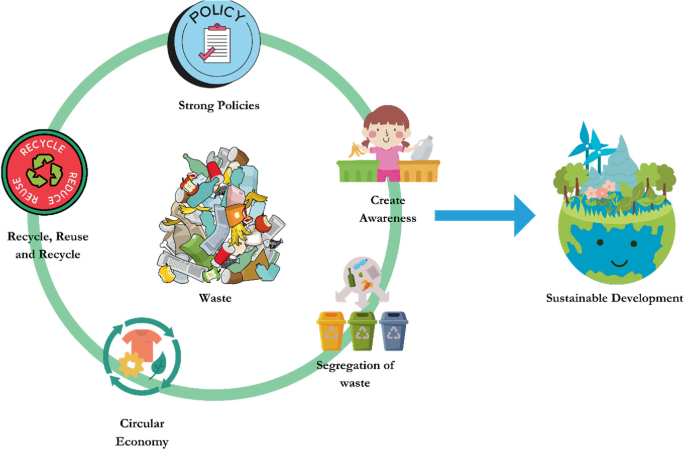The 45-Second Trick For Reclaim Waste
The 45-Second Trick For Reclaim Waste
Blog Article
5 Simple Techniques For Reclaim Waste
Table of ContentsA Biased View of Reclaim WasteOur Reclaim Waste DiariesSome Ideas on Reclaim Waste You Should KnowSome Known Facts About Reclaim Waste.Little Known Questions About Reclaim Waste.How Reclaim Waste can Save You Time, Stress, and Money.
Via correct fluid waste administration, firms can reduce energy-intensive treatment procedures and disposal expenses. They additionally get to conserve sources and assign them in other appropriate processes. There are numerous guidelines that secure public wellness and the setting. By complying with a system for managing liquid waste, companies can avoid costly fines and charges and avoid negative publicity.Keep in advance of policies and preserve a risk-free workplace with a digitized conformity tool. Identifying fluid waste is essential for effective storage space, treatment, and disposal. Environmental, Health, and Safety And Security (EHS) teams, waste administration police officers, and conformity managers can deal with these wastes safely and successfully when they comprehend the basics: Produced from families, this kind of fluid waste comes from bathrooms, sinks, showers, and washing makers.
(https://letterboxd.com/reclaimwaste1/)Accumulate depictive samples from numerous factors within the waste stream to make certain precision. Liquid waste, specifically unsafe ones, postures substantial risks during this step.
The Best Strategy To Use For Reclaim Waste
Segregate the waste based on its type (e.g., unsafe or non-hazardous) to ensure ideal handling. Shop waste in safe and leak-proof containers to stop spills during collection. Label the containers suitably, including the kind of waste, prospective risks, and managing instructions. Tons the secured containers into transportation lorries with vacuum vehicles or portable containers.
is required when the effluent will certainly be recycled or discharged into local pools. Sanitation (e.g., chlorination, ultraviolet light, ozonation) and nutrient removal (e.g., denitrification and phosphorus obliteration) are suggested under strict regulations. This stage in the procedure is strictly managed because it is when most dangers occur. Many business breached several fluid waste disposal regulations over the last few years.
After selecting the ideal kind of therapy technique for fluid waste, companies should find ways to get rid of this properly. Here are some reliable approaches of fluid waste management: get most treated fluid waste that fulfills discharge criteria. refers to utilizing cured wastewater in agricultural lands for irrigation as long as the effluent meets sanitary degrees per regulations.
Get This Report on Reclaim Waste
Shallow containers consist of fluid waste that is allowed to evaporate via all-natural procedures. This kind of disposal is subject to rigorous environmental guidelines due to potentially unsafe emissions.
The findings should be recorded, analyzed, and stored not simply for entry to governing authorities but also for making improvements in the future. Share info with appropriate stakeholders (e.g., staff members, regulative government agencies, and close-by communities) to keep transparency and liability.
More About Reclaim Waste
No matter of the business dimension or sector, there are many difficulties related to this job. Recognizing these can assist them effectively manage their operations and decrease their environmental impact. makes it tough to deal with and throw away fluid waste securely. Firms that can't purchase centers need to think about collaborating with the public industry for better solutions.
Liquid waste describes any material in a liquid state that is excess, unwanted, or disposed of. One considerable difficulty for business is the absence of appropriate storage space facilities for fluid waste. Partnering with fluid waste services will greatly decrease this challenge Criterion avoid bins and various other containers that are usually used for solid waste are typically not enough for the one-of-a-kind needs of dealing with fluid products.
See This Report about Reclaim Waste
This blog dives into the features of liquid waste, reviewing exactly how spills and contamination incidents can be handled efficiently. It also discovers the steps firms can take to avoid future leakages and what to do when spills undoubtedly happen. Fluid waste includes any kind of undesirable or surplus product that exists in a liquid form and is established for disposal.
This kind of waste arises when an item is no much longer required, a lot like any type of various other type of trash. It is critical to engage experienced liquid waste management experts when carrying or disposing of fluid waste.

About Reclaim Waste
The Environmental Security Company mentions the "material needs to go through a 0.45-micron filter at a pressure differential of 75 psi" in order to be specified as a fluid. What is very important to keep in mind below is that the much more strong an item is, the less most likely it is to be liquid. It's feasible to set apart between 2 sorts of liquid waste: natural and inorganic. Both have their differences.
Oil spills can lead to dirt contamination and other ecological disasters. Both businesses and people can significantly take advantage of understanding correct trash disposal processes with nine best practices in waste management. These methods are straightened with the established waste power structure. Waste avoidance is the most effective technique for managing sources and reducing ecological influence.

Report this page